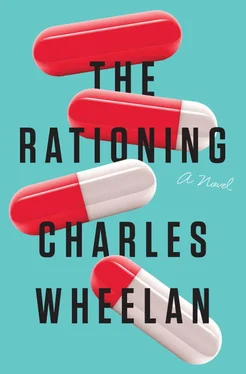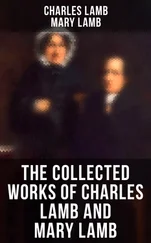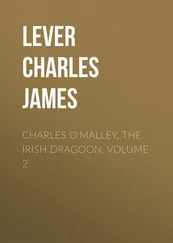I WATCHED THE PRESIDENT’S SPEECH ON MY LAPTOP AT THE NIH headquarters, along with Giscard and the rest of our impromptu team. After a flurry of activity, our work was temporarily stalled while the biochemists at the CDC examined the protein structure of the dormant and virulent forms of Capellaviridae . As we waited for those results, we confronted yet another theoretical conundrum: Suppose the dust mite did somehow deliver an antibody for Capellaviridae to its human host—then why was this effect not permanent? Antibodies typically last a long time, if not a lifetime, which is why a childhood immunization (or bout of the disease) is usually sufficient to provide immunity well into adulthood. This is where our dust mite theory collided with biological reality. We hypothesized that Capellaviridae —all lurking viruses, for that matter—bestowed some evolutionary advantage on the vectors that spread them, the North American dust mite in this case. Humans do not like having dust mites around; their bites are itchy and annoying. But Capellaviridae turns the North American dust mite into a lifesaver, literally. The dust mite somehow renders Capellaviridae impotent, making it nice to have around, all things considered.
Yes, we had some crucial details to figure out, but the theory was at least consistent with evolution—elegantly so. The three species were poised in a symbiotic relationship. Humans are more apt to thrive when the North American dust mite is present. The dust mite is more successful as a species because of the existence of Capellaviridae . And Capellaviridae thrives (in its benign form) when humans and dust mites live in proximity to one another. This is how nature is supposed to work.
So far, so good. But we were still missing the last twenty points on that Huke final exam. The only protection against viruses we were aware of consisted of antibodies, and antibodies are long-lasting— rendering the dust mite no longer relevant. “At that point, our theory consumes itself,” Giscard said dramatically as he tried to explain our theoretical conundrum to the NIH Director.
“I have no idea what you are talking about,” she said impatiently.
One of the biochemists followed up with less dramatic flair. “We’ve reached a contradiction,” he said. “Our hypothesis is that the North American dust mite makes itself valuable to humans by providing protection against Capellaviridae. ”
“The dust mite spreads Capellaviridae ,” the NIH Director interrupted.
“Exactly,” I said. “And the dust mite also protects against Capellaviridae turning virulent. That’s what makes this situation so biologically interesting.” We had developed more and more analogies to explain this “hostage” relationship. I offered up one of them: “A guy walks into a shopping mall with a bomb. He says, ‘I have a code that will prevent the bomb from detonating as long as I enter it every fifteen minutes. I will be perfectly happy to do that as long as you bring me food.’ Obviously if anything happens to the guy—”
“Really, it would be many, many guys with many bombs,” Giscard said.
“Yes, okay,” I agreed. “But the point is that everybody needs this guy—all of these guys—to stay alive. If anything happens to them, the whole place goes boom.”
“I already understand this,” the Director said.
“Of course you do,” Giscard said with what felt like excessive deference. Once again I was feeling the urge to harm him.
“Here’s the problem,” the biochemist explained. “That’s not how antibodies work—”
“They defuse the bomb,” Giscard interrupted. “The antibody team comes to the shopping place, they defuse the bomb, and then there is no need—”
“Enough with the bomb analogy,” the Director snapped. Various officials in the White House had been phoning her repeatedly for updates on the virus front. At one point she had angrily told the Chief of Staff, “Nothing since you called fifteen minutes ago.” I suspect the President was leaning on all the staff for some glimmer of hope that science might ward off the impending crisis.
I continued with our explanation to the Director: “Our whole theory revolves around the idea that the dust mite has somehow created a strategy to make itself valuable to humans—presumably by preventing Capellaviridae from turning virulent.”
“That’s what the data show,” Tie Guy said. “When the dust mite gets wiped out—”
“Yes, I know what the data show,” the Director said sharply. And then, more calmly, she summarized our dilemma more succinctly than we had ourselves: “The easiest way for the dust mite to protect against Capellaviridae turning virulent would be to introduce an antibody into the human host. But if that were the case, then there is no ongoing advantage to the humans from protecting the dust mite.”
“Exactly,” Giscard said, with what I felt to be a hint of surprise that the Director had so easily grasped the situation.
There was a brief silence as the Director reflected on what we had told her. “Well, I trust you’ll figure it out,” she said brusquely. With that, she turned and left the conference room. Giscard made a rude comment about female scientists and then retreated to his computer at the far end of the conference table. It never dawned on us that he was sharing our conversations with some of his French colleagues, in violation of our explicit orders. The pathetic irony is that he received credit for many of the ideas that emanated from our working group, not because he provided the intellectual spark for those breakthroughs (though that was occasionally the case) but because he disregarded our most important security protocols and wrote about them first.
SHORTLY BEFORE NOON IN DELHI, JUST ABOUT THE TIME AIR Force One entered American airspace, the U.S. Ambassador walked discreetly out the back of the Embassy compound and hailed a taxi. He normally traveled in an armored Cadillac with a security detail, but that entourage was inimical to what he was trying to do: somehow persuade the Indian Prime Minister that he would be fortunate to have the United States accept his offer of lifesaving Dormigen. “That just doesn’t make any sense,” the Ambassador complained as the Strategist gave him his final marching orders. “We have no leverage here. The Indian PM is perfectly aware of what’s happening in the United States. People are going to die. And you expect me to somehow persuade him that we are doing him a favor by letting him give us Dormigen?”
“No,” the Strategist said patiently. “Forget about the Dormigen. That’s not relevant here.”
“Of course it’s not,” the Ambassador said facetiously.
“Really, it’s not. What’s important is the publicity around the donation. We have to make him want that recognition more than he thinks we want the Dormigen.”
“That’s a tall order,” the Ambassador said.
“He’s got an election coming up. There are corruption investigations coming at him from every direction. Now he’s got an opportunity to transform India’s place in the world, to join the elite club of the world’s most important democracies—”
“Yes, I like that language,” the Ambassador offered.
“Who was that douchebag from New Mexico when you were in the Senate?” the Strategist asked.
“Pardon?” the Ambassador asked.
“The senator from New Mexico. Remember, ‘Never get between a television camera and’—what was his name?”
“Luvardnik,” the Ambassador answered.
“Yes. Remember how easy that guy was to deal with? He had no ideological convictions whatsoever. As long as you could assure him some political benefit, he was with you.”
Читать дальше












